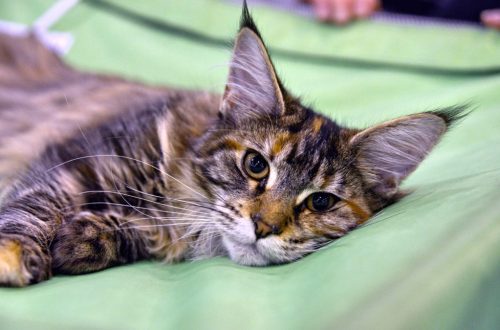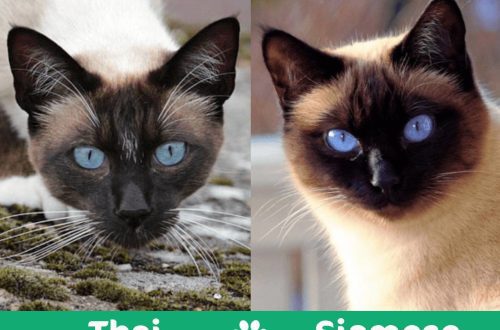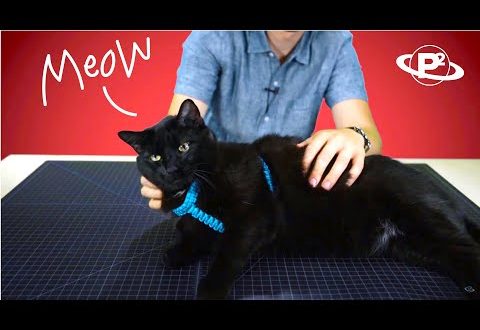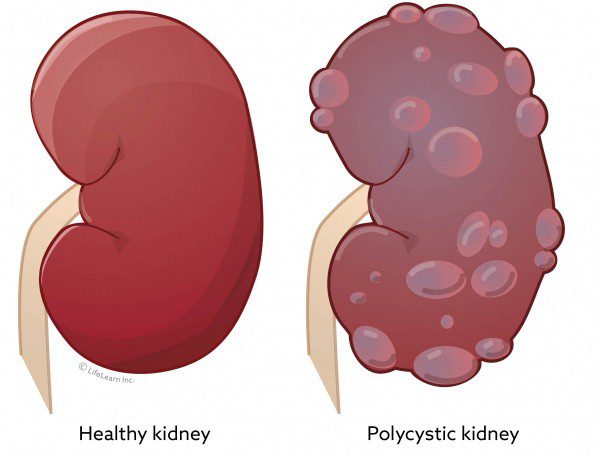
Polycystic kidney disease in cats
Contents
Features of polycystic kidney disease in cats
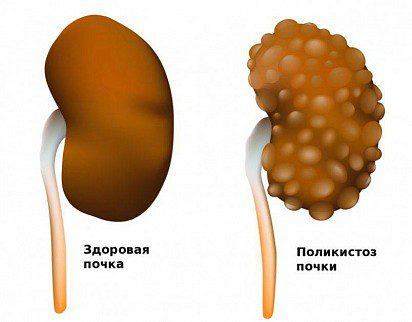
Renal cysts can form anywhere in the organ, such as in the area of the tubules or nephron. Fluid accumulates in the cavities, in some cases they are filled with dense contents. As a rule, the disease captures both kidneys. In the absence of treatment, the organs cannot cope with urine filtration, intoxication of the body occurs, and the contents of the cysts become an object for various pathogenic microorganisms, which leads to infection and sepsis.
Most often, polycystic kidney disease in cats is detected at 3-10 years of age. Pedigree animals are at risk: exotics, Persian, British and Scottish cats, as well as their mestizos.
What is dangerous disease
Kidney cells do not have the ability to regenerate (restore), so their death is irreversible. Severe cases of PCOS can lead to a number of complications:
- pyelonephritis;
- poisoning the body with toxins;
- malignant tumors;
- renal failure;
- glomerulonephritis;
- blood infection.
You can prevent the development of the disease, stop the pathological process by periodically visiting the clinic and regular diagnostics. If the cat is at risk, a check-up with a veterinarian every six months is recommended.
Causes of Polycystic Kidney Disease in Cats
Polycystic kidney disease in cats is genetic. An animal is inherited a mutant gene that is responsible for protein synthesis. The gene can be passed down from the mother or father, or both. Other causes of the disease are currently unknown. Some experts suggest that the state of the endocrine system also plays a significant role in the development of polycystic kidney disease in cats.
How does the disease manifest itself in cats?
Symptoms of polycystic kidney disease in cats at an early stage of the disease are absent. Since cysts grow slowly, obvious disturbances in the urinary system and throughout the body appear only at the stage when the formations replace most of the healthy kidney tissue.
The average cyst size in an adult cat is 0,5-1 cm (rarely larger). Formations can be detected even in a newborn kitten. As they grow, they put pressure on adjacent tissues and organs, preventing them from working properly and causing related symptoms. First of all, these are changes in behavior: lethargy, apathy, lack of appetite. Gradually, other signs join them:
- pain in the abdomen – the pet may meow plaintively, not allowed to touch the stomach;
- weight loss;
- vomiting;
- frequent urge to urinate;
- thirst;
- the appearance of blood impurities in the urine.
Perhaps an increase in the abdomen in volume. Large cysts are well felt on palpation. In some cases, the eyes of a cat may be affected: vision is reduced, the pupils become different sizes. Severe kidney damage, intoxication lead to a high temperature. A weakened body becomes easy prey for infection: the urinary tract and nervous system are affected.
At the last stage of the development of polycystic kidney disease, the cat no longer eats or drinks anything. The animal has no reaction to stimuli, convulsions are often observed, the urine becomes cloudy with an admixture of blood, laboratory tests show a large amount of protein and nitrogenous compounds in the urine and blood. Perhaps the degeneration of cystic cells into malignant.
Diagnostics
In the clinic, the pet will be prescribed an examination, which may include:
- blood and urine tests;
- urine culture;
- X-ray
- ultrasonography;
- biopsy.
Ultrasound of the kidneys is the most informative, with the help of which a specialist can examine the formations, assess the condition of the organs. Bakposev allows you to determine the causative agent of a secondary infection. With the help of a biopsy, the doctor makes a conclusion about the malignant or benign nature of the pathology. X-ray makes it possible to establish the stage of the disease – polycystic disease is detected only with a strong lesion.
If you know or suspect that your kitten has pedigreed parents, genetic testing can be done. It allows you to identify a predisposition to polycystic disease, and if the result is positive, take appropriate measures that will restrain the development of the disease.
Treatment of polycystic kidney disease in cats
There is no specific treatment for polycystic kidney disease in cats (as in humans). The development of cysts can be slowed down by a special diet, symptomatic therapy, and the use of detoxification methods. Sometimes surgery is indicated. Medicines are selected individually depending on the degree of development of the pathology and the symptoms present. In addition, it is necessary to undergo regular examinations. If the condition of the pet improves or worsens, the doctor will make adjustments to the therapeutic regimen.
Medication Therapy
Polycystic kidney disease provokes an increase in blood pressure in a cat, which can negatively affect the state of the heart, blood vessels, brain, up to a stroke. Vomiting and nausea gradually lead to gastritis, peptic ulcer, pathologies of the digestive tract. Secondary infection can cause blood poisoning, and so on. The complex of treatment of polycystic kidney disease includes drugs of various pharmacological groups. The veterinarian may prescribe:
- antibiotics;
- anti-inflammatory drugs;
- gastroprotectors;
- myotropic drugs;
- means of preventing or eliminating anemia;
- sorbents.
Surgery
Surgical intervention for polycystic kidney disease is rarely performed, since it gives a positive effect only at the initial stage of the disease, when the cysts are very small. This does not mean that in the future they will not reappear, but this will to some extent delay the “flourishing” of the pathology.
However, due to the absence of symptoms at the initial stage of polycystic, few people turn to a specialist. Cysts are large in size, significant areas of destroyed renal tissue are not removed due to inexpediency – new ones form very quickly in their place.
Detoxification
Detoxification of the cat’s body is carried out by plasmapheresis or hemosorption. In the first version, the procedure is based on the purification of blood from toxins outside the body by a special method. The second option involves the use of sorbents that bind and remove toxic substances. Both procedures significantly improve the condition of the animal, therefore, with polycystic kidney disease, they are recommended to be carried out regularly. The same effect is achieved with the help of a kidney puncture, during which the fluid accumulated in the cysts is pumped out.
Features of food
If the cat is on natural food, high-fat, high-protein, high-calorie foods are excluded from the diet. It is recommended to give more lean meat food, for example, boiled chicken, turkey, broths. Food should be well and quickly digested.
When feeding with industrial canned food, preference is also given to poultry and veal products. If the pet is accustomed to dry food, you should “retrain” it, gradually transferring it to wet food. It is even better to choose a line of medicinal feeds for a cat with a low content of a protein component, but with increased calcium.
It is important that the cat drinks as much water as possible. And the food itself should be mostly in liquid form.
Disease prognosis
How long cats live with polycystic kidney disease depends on the stage of the disease. In severe cases, with obvious symptoms of the disease and diagnosed chronic renal failure, with damage to more than half of the organ tissue, the prognosis is unfavorable. The maximum life expectancy of a pet, on average, will be two months (depending on many factors).
If the pathology is detected earlier, the life span increases. However, in this case, you must strictly follow the recommendations and prescriptions of the doctor. With cysts of small size and their small number, in the absence of symptoms, the cat can live to a ripe old age, provided that the formations are removed and maintenance therapy is followed.
How to prevent polycystic kidney disease in cats
Since polycystic disease is genetic in nature, there are no preventive measures for its development. Breeders are advised to subject animals with this defect to spaying to prevent further spread of the mutated gene. But it must be borne in mind that a kitten with polycystic disease can be born to healthy parents, provided that in the process of the formation of a germ cell, this mutation occurred in one of them under the influence of some factor. Thus, the parents will not be carriers of the gene, and the kitten will become it at birth and will continue to pass it on.
The only option to avoid developing polycystic kidney disease in a cat (with established inheritance) is to remove small cysts at a young age, provide supportive care and diet for the rest of life. The pet must be sterilized.



